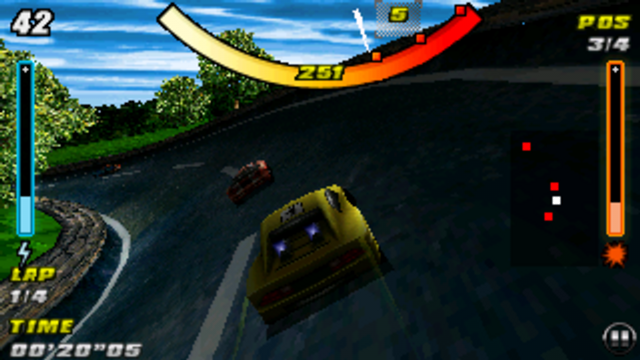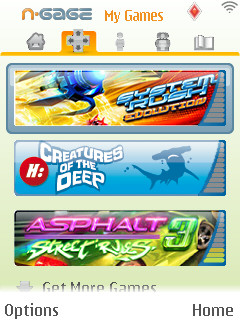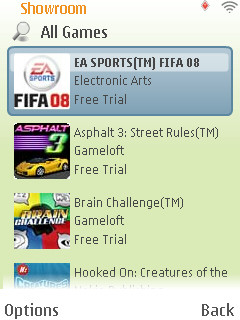To give you an example, Steve and I set up a multiplayer game on the recently released Raging Thunder 2 HD game from Polarbit (review coming soon). We attempted to set up a game over the internet, but hit quite a few problems. It’s telling that we needed to go to a voice call (over Skype on our desktop computer) to get everything set up, make sure we were logged into the same “room” in the game, and that we knew each other’s gaming handle.
It works, but it’s very functional and not at all smooth.
There was also an interesting quirk that, having registered for a multiplayer profile on a Polarbit game many moons ago (so long ago I don’t recall which one it was) I had forgotten about it and attempted to set up a new one. Which led to confusion as first my email address wasn’t accepted and then I had to think about what the old password was. An obvious password recovery system was needed in this title - something which it doesn't have.
 Perhaps it was this game, the original Raging Thunder title, that set up my mystery Polarbit profile...
Perhaps it was this game, the original Raging Thunder title, that set up my mystery Polarbit profile...
But this raises a lot of issues that still need to be solved for multiplayer games that happen outside of a single physical room. It’s far easier to check things and sort connection issues when you’re in the same pub, but if you’re at opposite corners of the world it gets a little more difficult.
At the heart of the problem is that to get an application talking to another instance of itself over any computer connection requires communication from the users, and if it’s not part of the game engine, then a voice call, IM chat or other method is going to need to be used – and for all the multitasking options on any mobile platform, this is an issue that currently has no easy answer on the mobile.
Interestingly, Nokia have partially solved this problem already. In the second version of the N-Gage Platform, the N-Gage arena software interfaced directly with the online multiplayer part of each of the N-Gage game titles. When you went to the online option, the Arena software came up, and it was a short process to check your friends list, who was online, and invite them to play.
It was never perfect, you still needed some co-ordination in advance with your friends, but setting up those multiplayer games was a lot easier than for the current crop of Symbian^3 games. So the annoying element of all of this is that sitting in the depths of Nokia is the solution to a problem that does exist right now – perhaps because it was yesterday’s news, perhaps because it’s tied into an old product name, or perhaps it’s because the project was started and managed by someone who is no longer at Nokia (killer projects have been stopped for less).
But even if it was up and running, Nokia would need to have the system available for developers to use, and it would need to be flexible enough to fit a huge range of demands from developers. And would these developers be getting the system for free? It’s unlikely, as support issues would be quite high in terms of maintaining uptime, the number of handsets that could be connected in real time, and of course developer support and SDK tools would need to be crafted as well.
All of that would take time (and press) away from the Qt story, which Nokia see as their future.


But I think something is needed. With the occasional game implementing its own system, it’s just about manageable – but if more titles appear, each with their own way of doing it, the end-user experience is going to be poor and developers are going to spend a lot of time individually re-creating the wheel. And where Nokia develop, iterate and then quietly sideline, other companies will announce it as their shining crown jewel.
The X-Box Live system is a great example of a connected network with shared game play and multiplayer hooks. Apple’s Game Centre for iOS devices could easily be seen as offering the same service as the N-Gage Arena. Both of these are available to programmers, both make for a better user experience, and both enrich the platform far more than the investment placed in them would suggest.
So here’s a thought for Nokia. Think about how you can help multiplayer gaming, think how you can leverage the Ovi brand, with its single sign in, think how you can make the world a better place – its time to dust down some family treasures, hand them to a team of polishers, and provide the millions of Symbian-powered smartphones out there with a multiplayer gaming network that we can all use.
-- Ewan Spence, Dec 2010.
